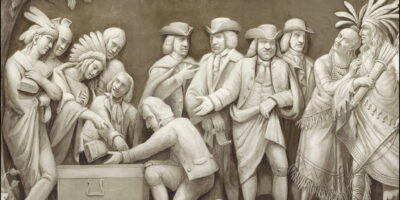Introduction to Farsi Edition of Human Action

You will soon discover that Human Action by Ludwig von Mises is the monumental and magisterial economic treatise of the 20th century. As the owner, you will return to it constantly throughout your life. You will likely never master its contents. It has a way of seeming to be new every time you pick it up. It’s a focussed book with one big distraction: you can’t help but wonder how one man could have achieved this.
What strikes me as especially remarkable are the circumstances under which it came to be written. Ludwig von Mises went into exile from Austria in 1934 ahead of the German invasion and Nazi Party takeover of the country. He landed in safety in Geneva. He went to work there, quietly for fully six years. At the end of that period, the mighty book first appeared. But it appeared in German in the midst of the war, and had no chance for any kind of literary success. Sadly, the first iteration made no impact whatsoever.
He was now sixty years old, and under pressure to leave Geneva. He came to the United States, and chose to live in New York. He had no job. His book had been burned by the German armies. His papers were confiscated. He had nothing but a reputation as the last of a dying breed of intellectuals. He did have a few friends, among them Henry Hazlitt, a well-connected editor at the New York Times. Hazlitt put him in touch with an editor at Yale University Press, which published over the following four years two books.
Then the editor came to him, perhaps in 1947, and asked him to translate his 1940 book. Mises was reluctant but Hazlitt talked him into it. It was completed two years later, but it came in at 1,000 pages. Yale started getting cold feet. They looked for academic peers to endorse the effort but failed to find them. Some of the rejection letters came from people who should have known better. Finally, Fritz Machlup, then teaching at Harvard, came to the rescue and it was published.
The sales were surprisingly good for an academic book. But even then, it was far from enjoying popular fame. That would have to wait until after the botched 2nd edition (1963) and then finally the 3rd edition which came out in 1966. Mises died 7 years later, before the collapse of the Keynesian consensus, the collapse of socialism, and the mess made by central banking in the 1970s. It was these events that caused so many to turn to the master for explanations. They found them in Human Action.
To review, Mises started working on this book in 1934. It didn’t achieve fame and influence until perhaps 40 years later. Think about that when you consider the power of ideas and the job of an intellectual. We absolutely must think about the long term, do our best possible work, and have confidence in the future. That’s the great lesson of this amazing book.
Now you own it. Learn from it. Return to it again and again. May it always be with us, widely circulated in every land and every language, forever.










